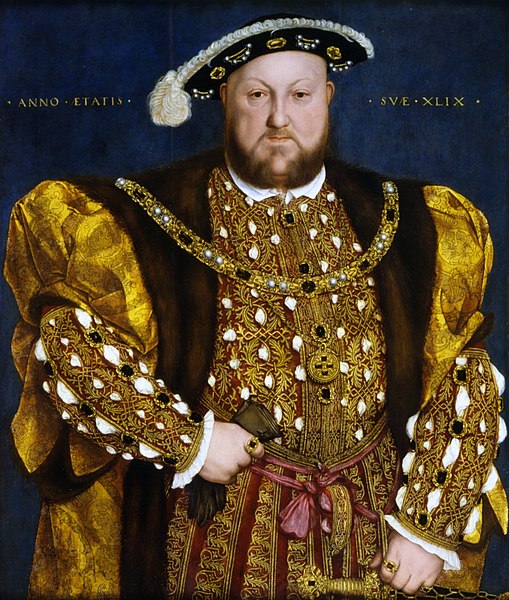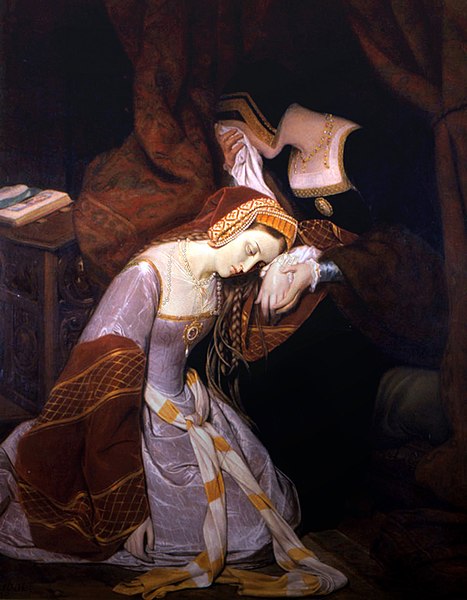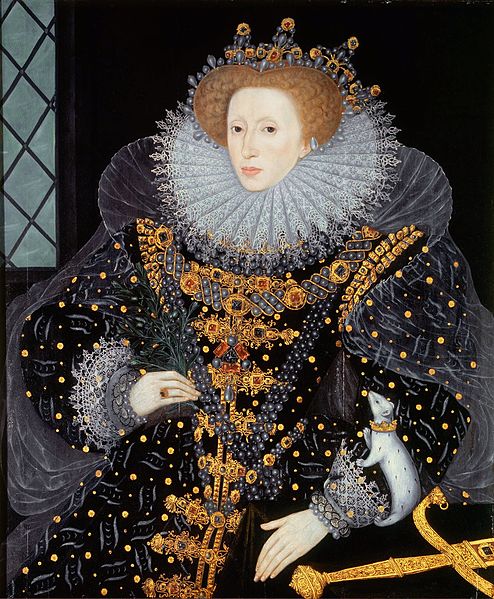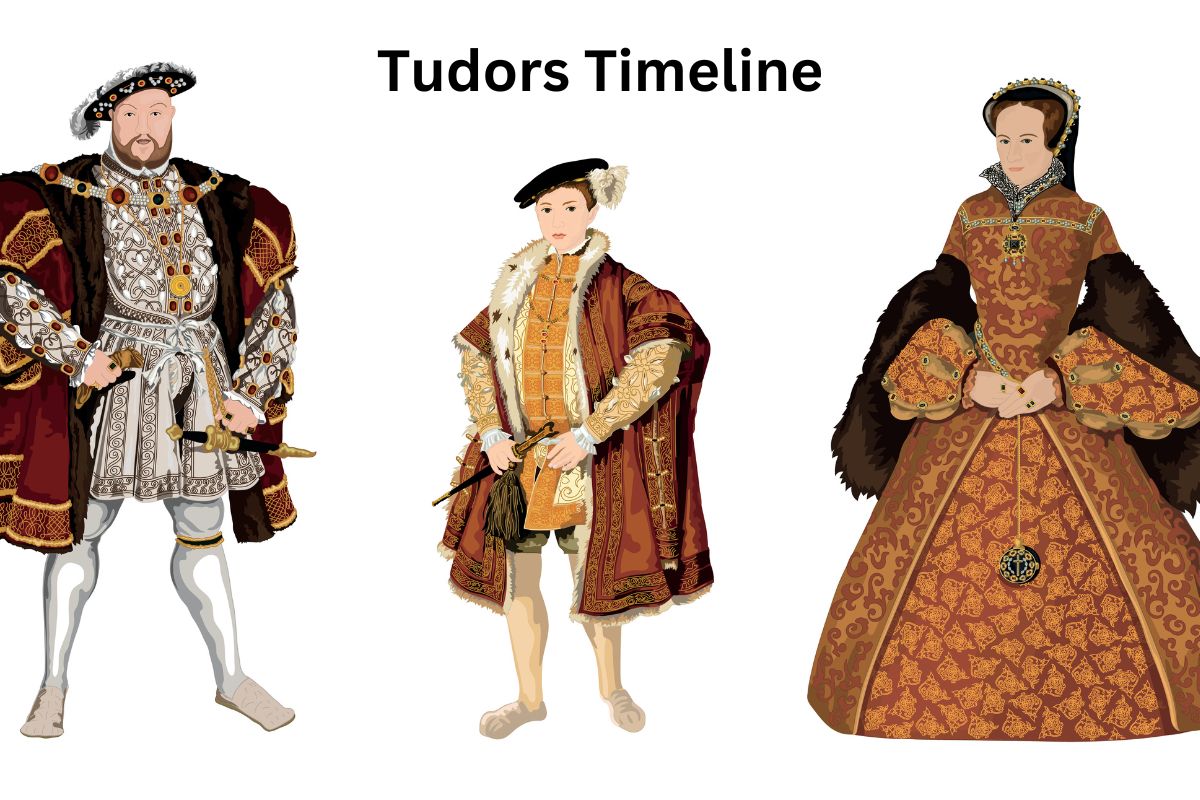The Tudors were a prominent English royal dynasty that ruled from 1485 to 1603.
Their reign marked a transformative period in English history, characterized by significant political, religious, and cultural changes.
The Tudor era saw the end of the Wars of the Roses, the establishment of the Church of England, the expansion of English influence overseas, and the flourishing of the Renaissance in England.
Key monarchs of the Tudor dynasty include:
- Henry VII
- Henry VIII
- Edward VI
- Mary I
- Elizabeth I
The Tudor dynasty left an indelible mark on England’s history, shaping the nation’s religious, political, and cultural landscape. Their reigns are remembered as a dynamic and transformative era in the history of the British Isles.
| Year | Monarch | Key Events and Notable Facts |
|---|---|---|
| 1485 | Henry VII | – Henry Tudor defeats Richard III at Bosworth Field, becoming Henry VII. |
| 1486 | Henry VII | – Marriage to Elizabeth of York, uniting Lancaster and York. |
| 1497 | Henry VII | – Cornish Rebellion led by Perkin Warbeck. |
| 1509 | Henry VIII | – Henry VII dies, Henry VIII ascends the throne. |
| 1513 | Henry VIII | – Invasion of France during the War of the League of Cambrai. |
| 1521 | Henry VIII | – Awarded the title “Defender of the Faith” by Pope Leo X. |
| 1527 | Henry VIII | – Seeks annulment from Catherine of Aragon, leading to conflict with the Catholic Church. |
| 1533 | Elizabeth I | – Henry VIII marries Anne Boleyn. |
| 1534 | Elizabeth I | – Act of Supremacy declares the English monarch as head of the Church of England. |
| 1536 | Elizabeth I | – Anne Boleyn is executed, Henry marries Jane Seymour. |
| 1537 | Elizabeth I | – Jane Seymour gives birth to Edward VI. |
| 1547 | Edward VI | – Henry VIII dies, Edward VI becomes king at age nine. |
| 1553 | Mary I | – Edward VI dies, Lady Jane Grey briefly rules. |
| 1553 | Mary I | – Mary I becomes queen and restores Catholicism. |
| 1558 | Elizabeth I | – Elizabeth I becomes queen after Mary I’s death. |
| 1559 | Elizabeth I | – Elizabethan Religious Settlement establishes the Church of England as Protestant. |
| 1588 | Elizabeth I | – Defeat of the Spanish Armada by the English navy. |
| 1603 | Elizabeth I | – Elizabeth I dies without a direct heir, ending the Tudor dynasty. |
| 1603 | James I (Stuart) | – James VI of Scotland becomes James I of England, marking the Stuart dynasty. |
Timeline of the Tudors
1485 – Henry VII’s Victory at Bosworth Field:
In August 1485, Henry Tudor, who would later become Henry VII, led a rebellion against King Richard III of the House of York. The decisive battle took place at Bosworth Field in Leicestershire, England.
Henry’s forces defeated Richard III’s army, and Richard himself was killed in the battle. Henry Tudor emerged victorious and was crowned as Henry VII, marking the beginning of the Tudor dynasty.
Also Read: Tudors Facts
This battle is often considered the end of the Wars of the Roses, a series of conflicts between the rival houses of Lancaster and York for control of the English throne.

1486 – Marriage of Henry VII and Elizabeth of York:
To secure his claim to the throne and unite the warring factions of Lancaster and York, Henry VII married Elizabeth of York in January 1486. Elizabeth was the daughter of Edward IV, a Yorkist king.
This marriage symbolically ended the Wars of the Roses by uniting the two rival houses. Their union created a sense of stability in the kingdom and helped legitimize Henry VII’s reign.
1497 – The Cornish Rebellion:
In 1497, a rebellion known as the Cornish Rebellion, or the “Cornish Rising,” took place in Cornwall, England. The uprising was largely in response to heavy taxation and economic grievances.
The rebels, led by Perkin Warbeck, a pretender to the English throne, advanced into the heart of England, but their rebellion was eventually suppressed by Henry VII’s forces.
This rebellion was one of several challenges to Henry VII’s rule during his early years as king.
1509 – Henry VIII Ascends to the Throne:
On April 21, 1509, Henry VII passed away, and his son Henry VIII succeeded him as the King of England. Henry VIII was 17 years old at the time.
Henry VIII’s early reign was marked by optimism and a desire for a new era in England. He was known for his youth, charisma, and interest in the arts and sports.
1513 – Invasion of France during the War of the League of Cambrai:
In 1513, early in his reign, Henry VIII embarked on a military campaign in France as part of the War of the League of Cambrai, a broader European conflict.
Henry’s army achieved a notable victory at the Battle of the Spurs, capturing the French town of Tournai.
While the war was ultimately inconclusive, Henry VIII’s military campaigns in France marked his early ambitions in foreign affairs and his desire to assert England’s power on the continental stage.
1521 – Henry VIII Awarded “Defender of the Faith” by Pope Leo X:
In 1521, Pope Leo X bestowed upon Henry VIII the title “Defender of the Faith” (Fidei Defensor in Latin) in recognition of his defense of the Catholic Church against the teachings of the Protestant reformer Martin Luther.
At this time, Henry VIII was a devout Catholic and staunchly defended the authority of the Pope. This title was a mark of papal approval and an honor for his writings against Luther’s Protestant ideas.

1527 – Henry VIII’s Request for an Annulment:
In 1527, Henry VIII sought an annulment of his marriage to Catherine of Aragon, his first wife. Catherine had not borne him a male heir, and Henry sought to marry Anne Boleyn in the hope of securing a male successor.
His request for an annulment set off a protracted legal and theological battle with the Catholic Church, as Catherine of Aragon was the aunt of the Holy Roman Emperor, Charles V, who had significant influence in Europe.
1533 – Henry VIII Marries Anne Boleyn:
Despite the ongoing dispute with the Catholic Church over his marriage to Catherine of Aragon, Henry VIII married Anne Boleyn in 1533. This marriage took place after Henry had Anne crowned as queen.
The marriage to Anne Boleyn marked a pivotal moment in English history. Henry’s determination to annul his first marriage eventually led to the English Reformation and the establishment of the Church of England, with the monarch as its supreme head.
1534 – The Act of Supremacy:
In 1534, Henry VIII’s quest for an annulment led to the passing of the Act of Supremacy by the English Parliament. This act declared the English monarch, at that time Henry VIII, as the “Supreme Head of the Church of England.”
The Act of Supremacy effectively severed ties between the Church of England and the authority of the Pope, marking the official beginning of the English Reformation and the establishment of Protestantism as the state religion.
1536 – Anne Boleyn’s Execution and Marriage to Jane Seymour:
In 1536, Anne Boleyn was arrested, charged with adultery and treason, and subsequently executed. Henry VIII then married Jane Seymour, his third wife.
Jane Seymour gave birth to Henry’s only male heir, Edward VI, in 1537. Edward’s birth was a significant event as it provided a potential male successor to the throne, which Henry had sought for years.

1547 – Henry VIII Dies, and Edward VI Becomes King:
In 1547, Henry VIII passed away, leaving the throne to his young and sickly son, Edward VI, who was just nine years old at the time.
Edward’s reign marked a period of Protestant reform in England, as his advisors sought to further distance the Church of England from Catholicism.
1553 – Edward VI Dies, and Lady Jane Grey’s Brief Reign:
Edward VI’s death in 1553 without a clear male heir led to a succession crisis. He nominated Lady Jane Grey, his cousin, as his successor.
Lady Jane Grey’s reign was extremely short, lasting only nine days. Her claim to the throne was contested, and she was eventually overthrown by Mary I.
1553 – Mary I Restores Catholicism:
Mary I, the daughter of Henry VIII and Catherine of Aragon, became queen in 1553. She was a devout Catholic and sought to return England to Catholicism.
During her reign, there was a brief period of religious persecution, earning her the nickname “Bloody Mary.” Many Protestants were executed, and Catholicism was briefly reinstated as the state religion.
1558 – Elizabeth I Becomes Queen:
Mary I died in 1558, and her half-sister Elizabeth, the daughter of Henry VIII and Anne Boleyn, ascended to the throne. Elizabeth’s reign is often referred to as the Elizabethan era.
Elizabeth I pursued a policy of religious tolerance and established the Elizabethan Religious Settlement, which aimed to find a middle ground between Catholicism and Protestantism.

1559 – Elizabethan Religious Settlement:
In 1559, Elizabeth I implemented the Elizabethan Religious Settlement, which had a significant impact on England’s religious landscape.
The settlement established the Church of England as a Protestant institution with the monarch as its supreme governor. It allowed for a degree of religious pluralism and sought to reconcile religious differences within the kingdom.
1588 – Defeat of the Spanish Armada:
In 1588, Elizabeth I’s reign faced a significant military threat from the Spanish Armada, a fleet sent by King Philip II of Spain to invade England and restore Catholicism.
The English navy, led by Sir Francis Drake and others, successfully defeated the Spanish Armada in a series of naval battles. This victory marked a turning point in European history and bolstered England’s status as a naval power.
1603 – Death of Elizabeth I and End of Tudor Dynasty:
Elizabeth I died in 1603 without a direct heir. Her death marked the end of the Tudor dynasty, which had ruled England since 1485.
With no direct Tudor heir, the throne passed to James VI of Scotland, who became James I of England, uniting the crowns of England and Scotland and beginning the Stuart dynasty.
1603 – James I (Stuart) Takes the Throne:
James VI of Scotland became James I of England in 1603, marking the start of the Stuart dynasty.
His reign brought about a period of union between England and Scotland, known as the Union of the Crowns, while the two countries retained separate parliaments.
Tudor Legacy and Historical Significance:
The Tudor period was characterized by significant political, religious, and social changes in England, including the English Reformation and the establishment of the Church of England.
It saw England’s emergence as a major European power, marked by exploration, colonization, and the defeat of the Spanish Armada.
The Tudor dynasty left a lasting impact on English history, influencing subsequent developments in religion, government, and culture.
